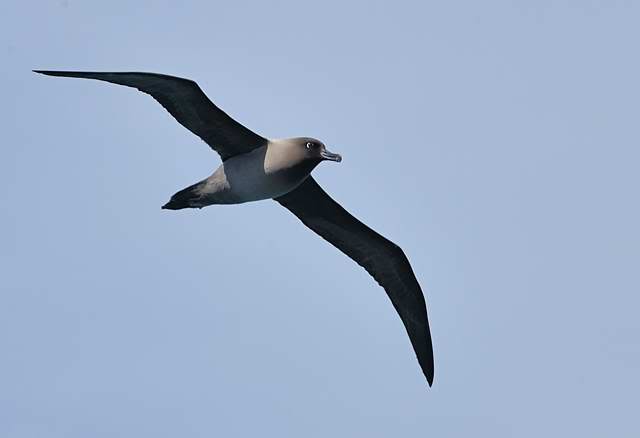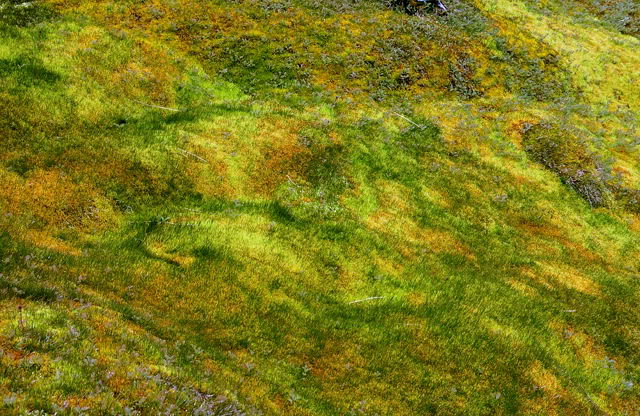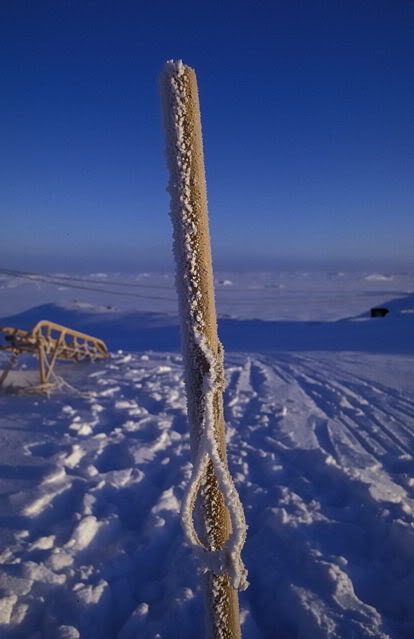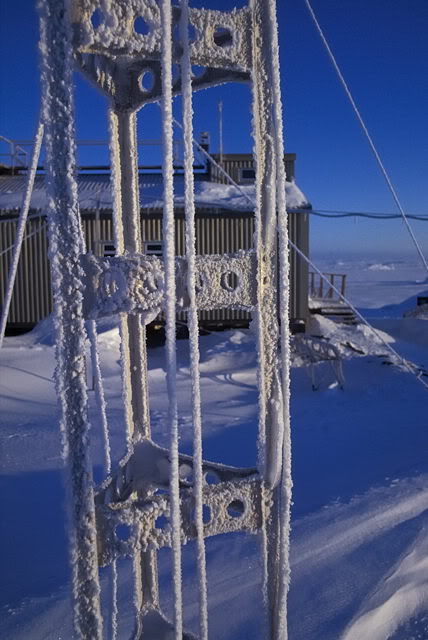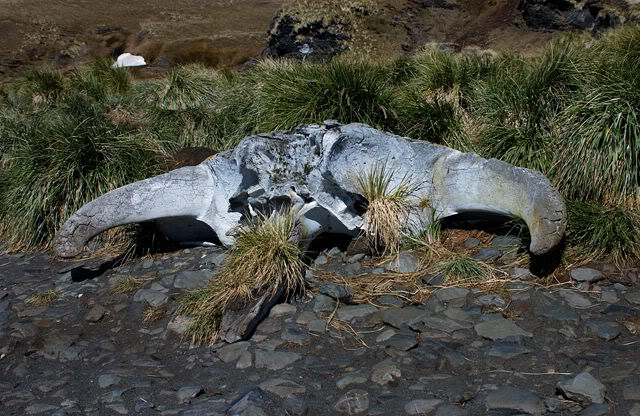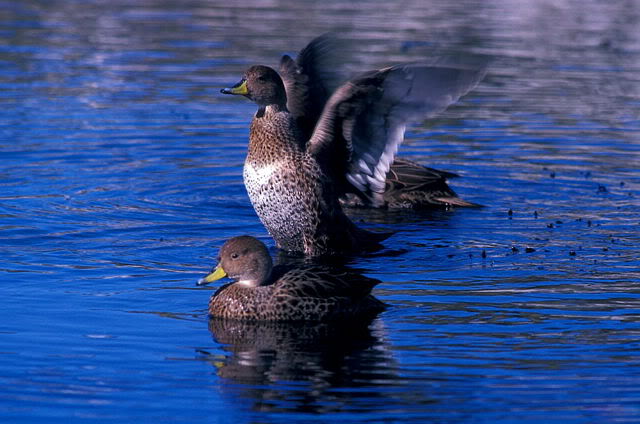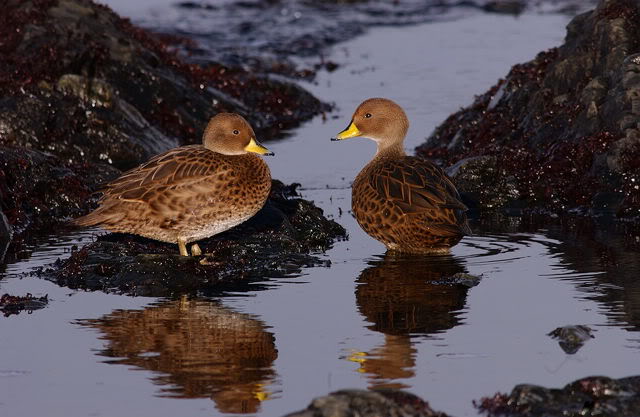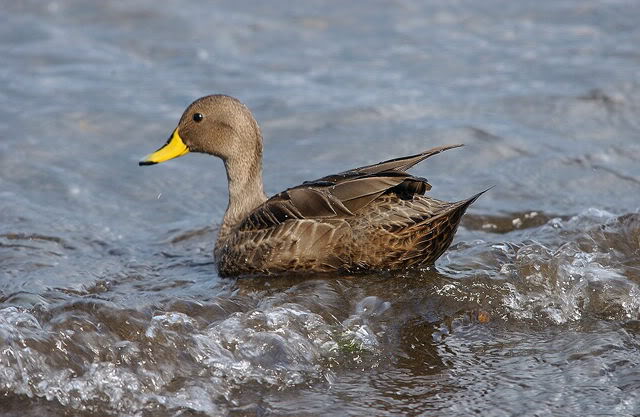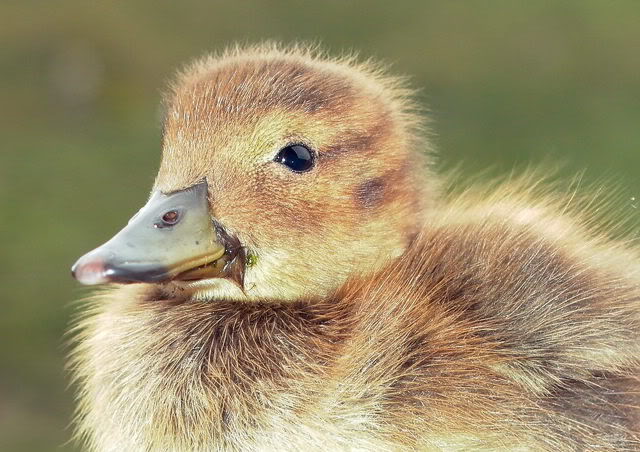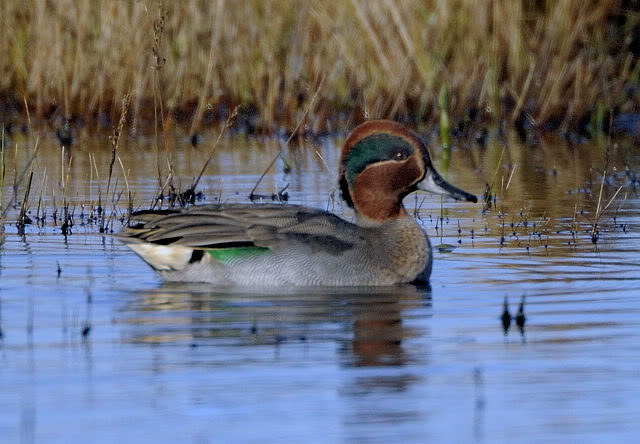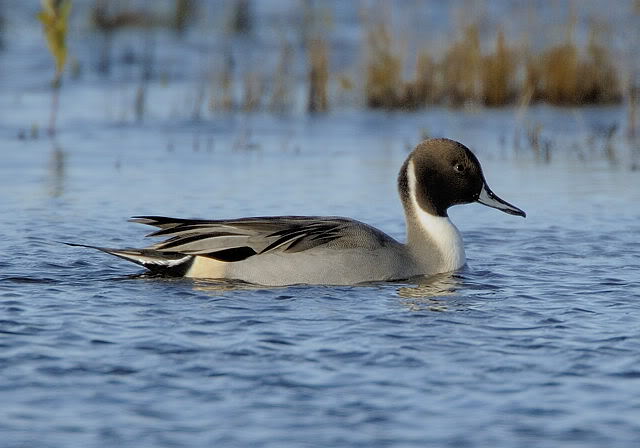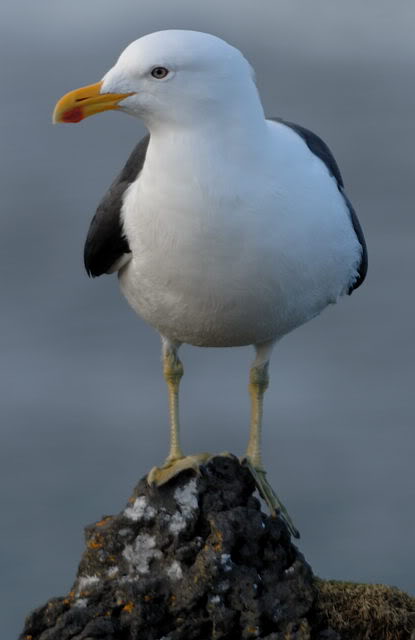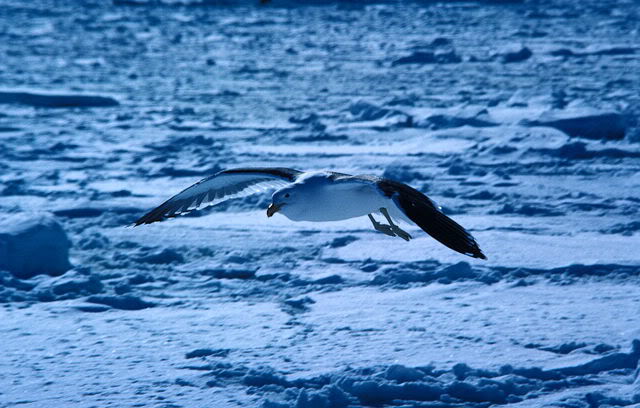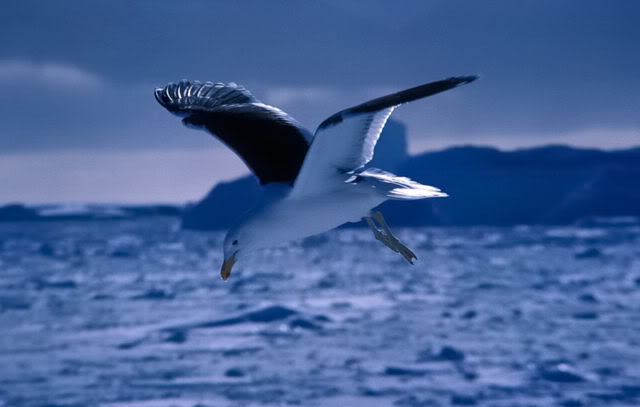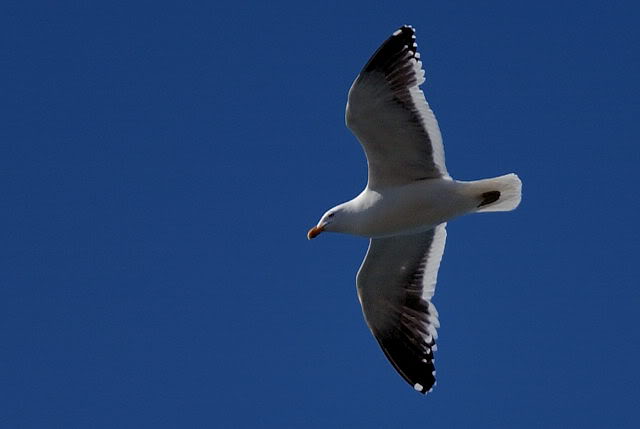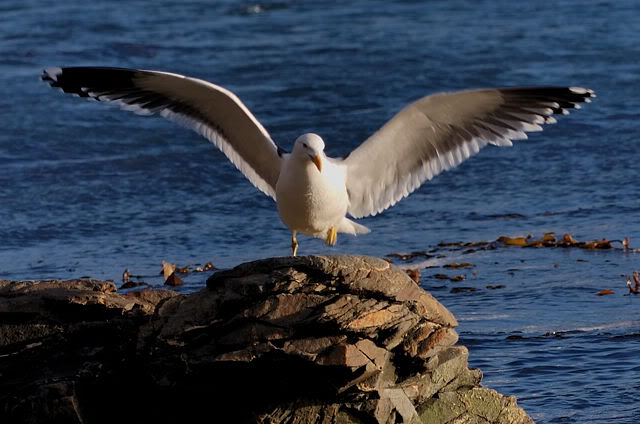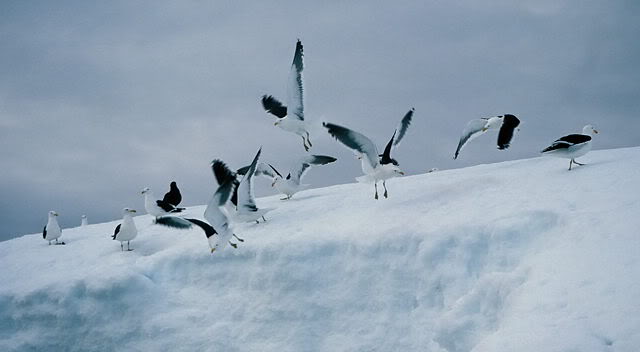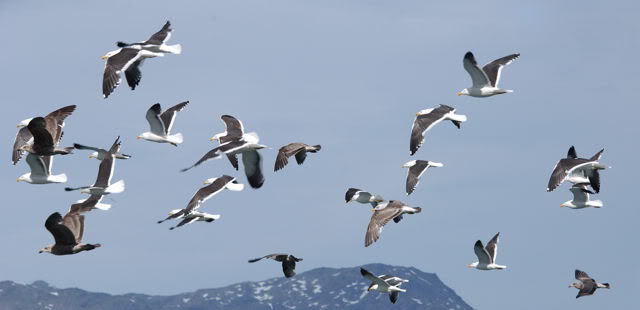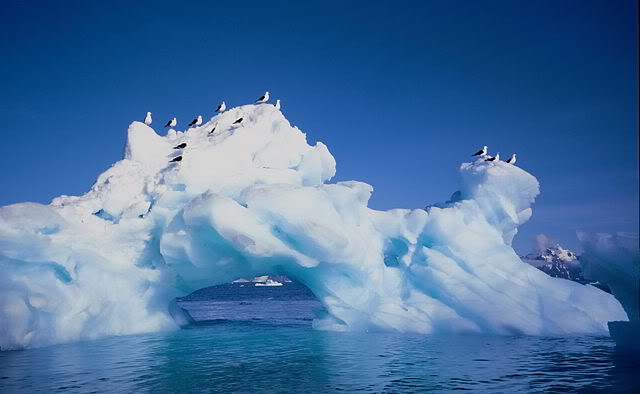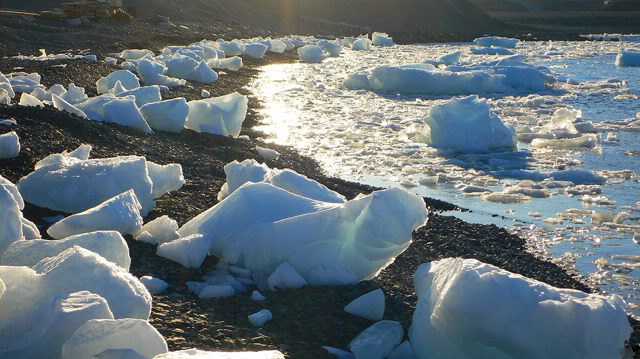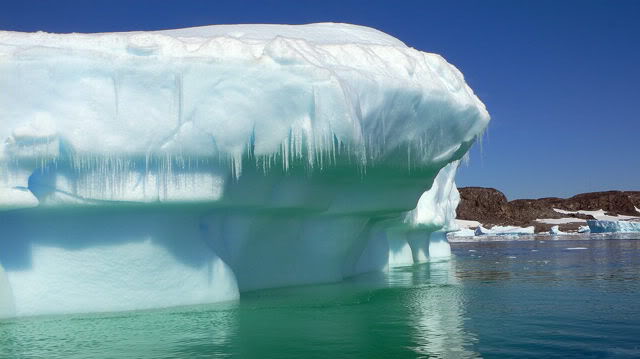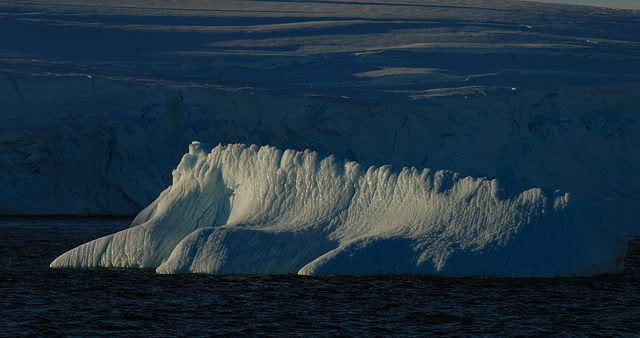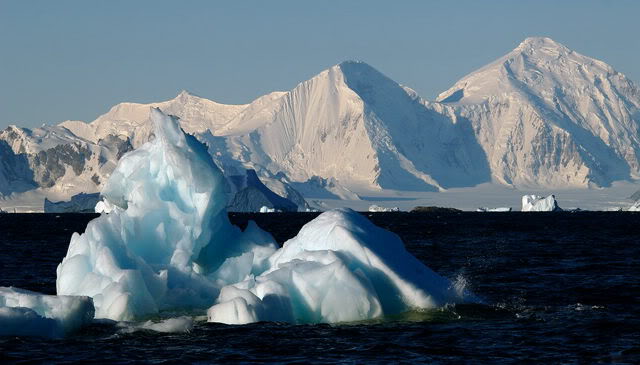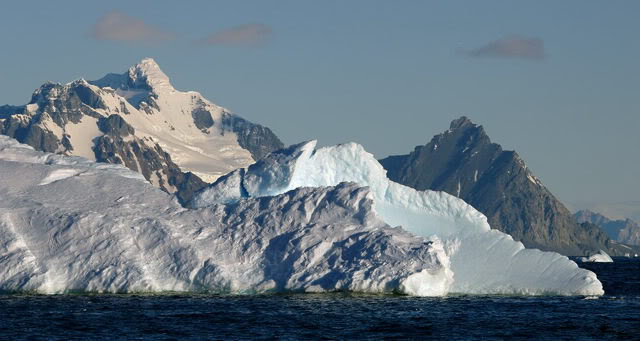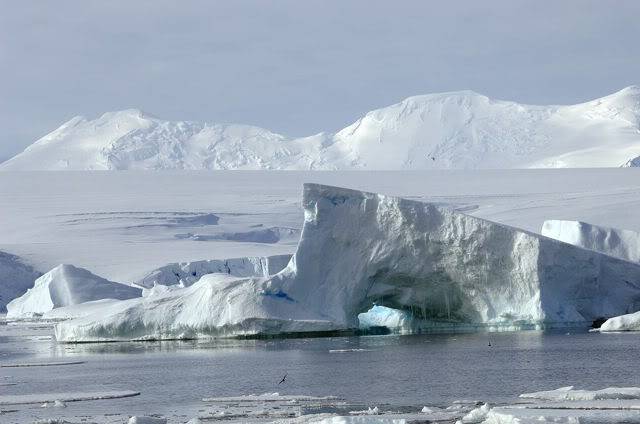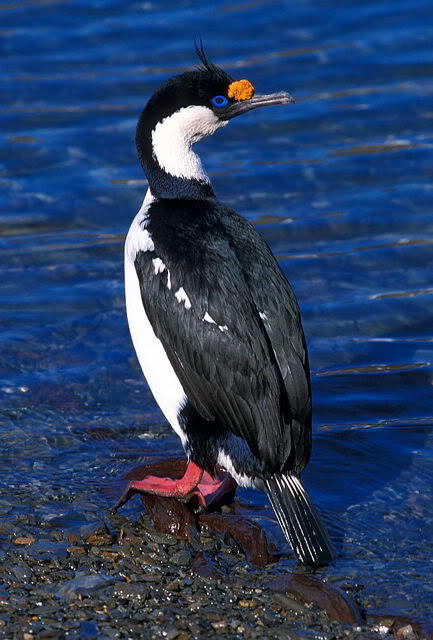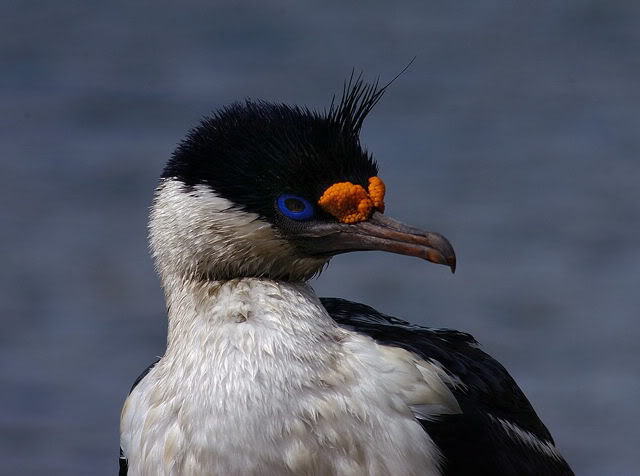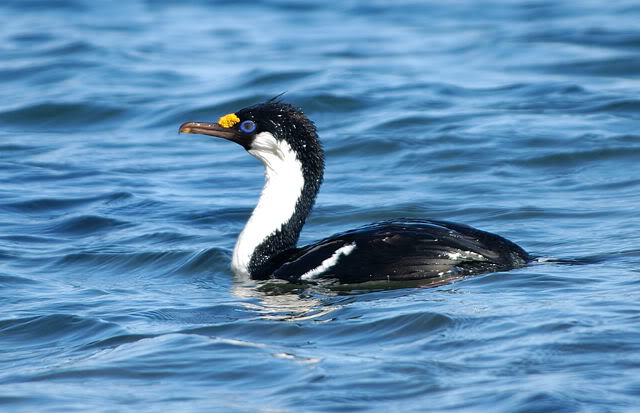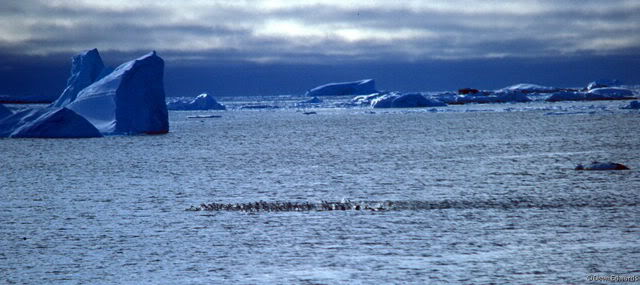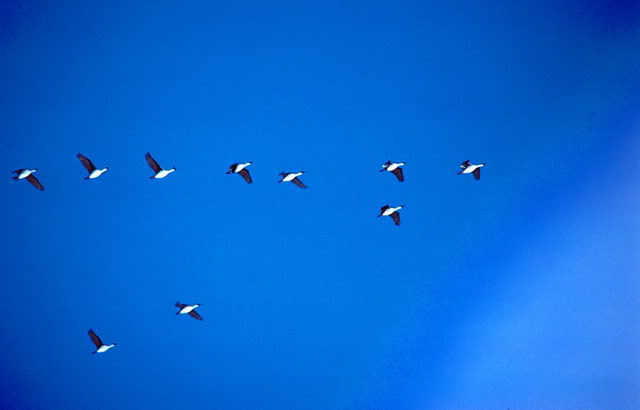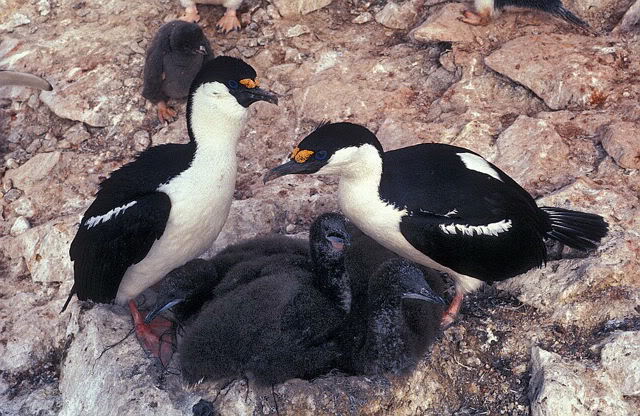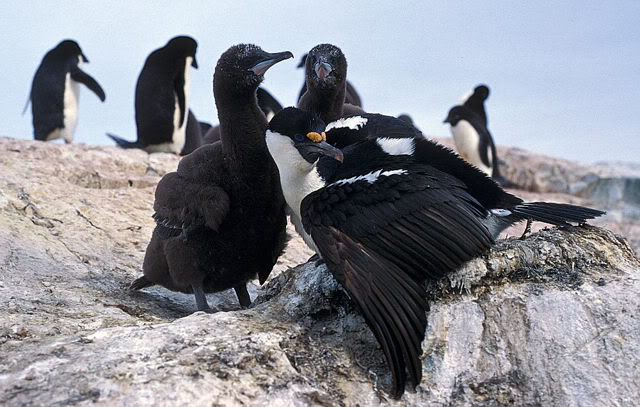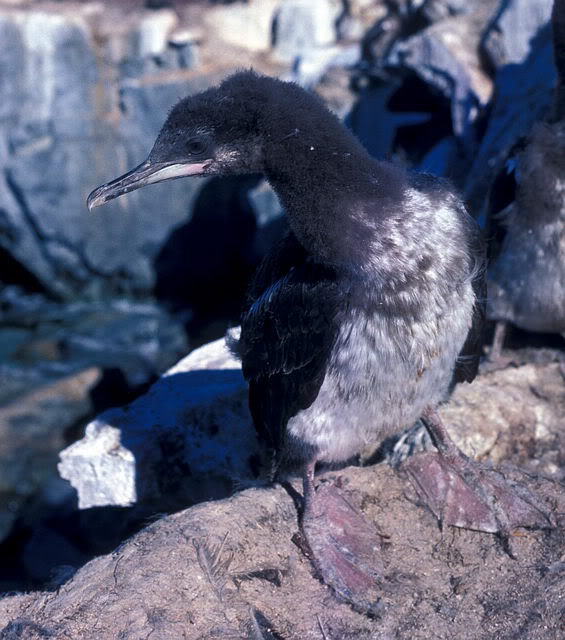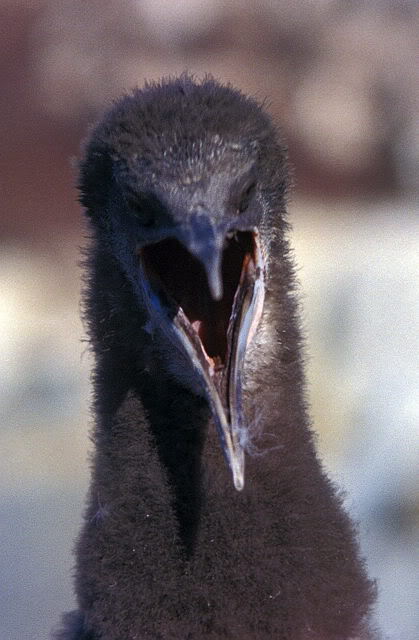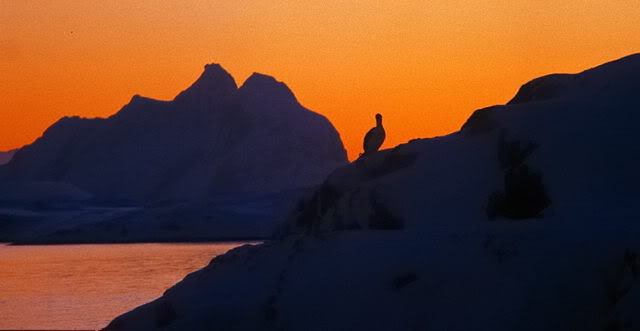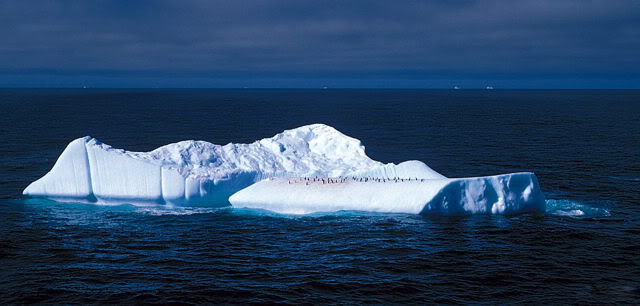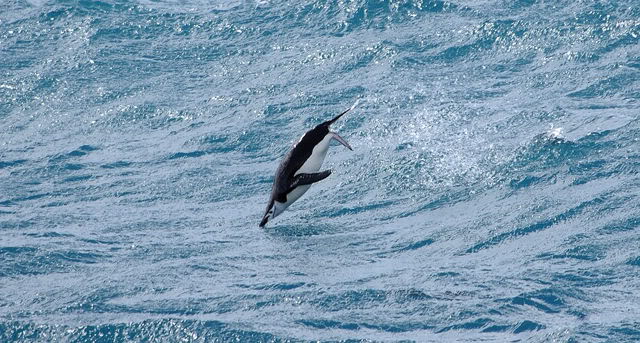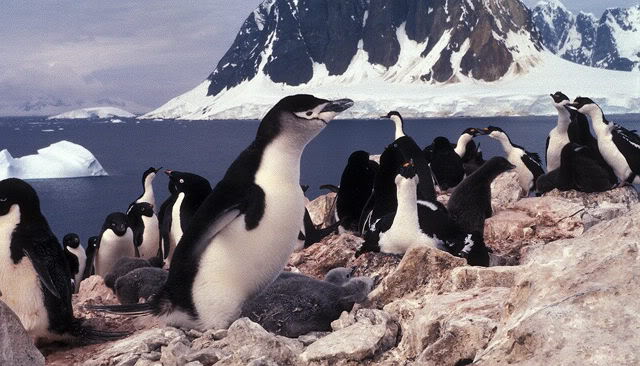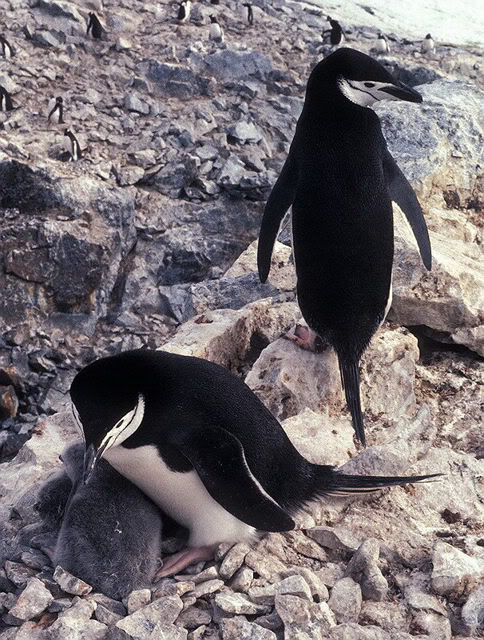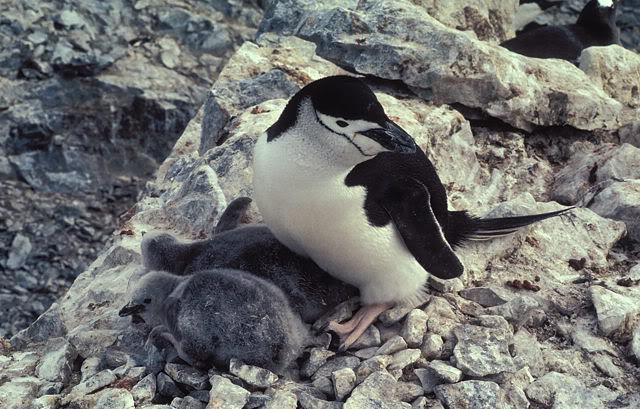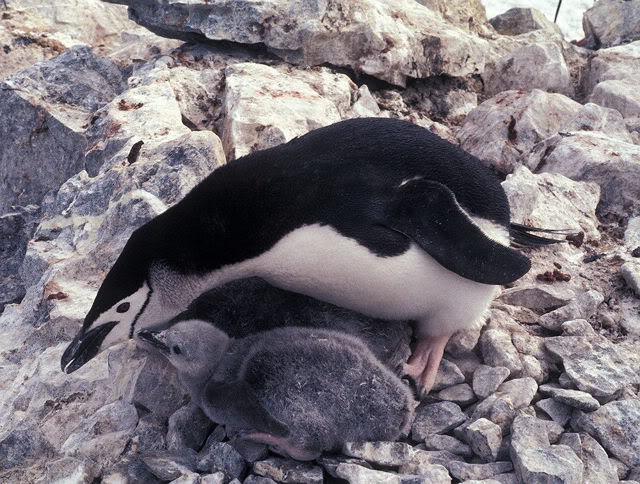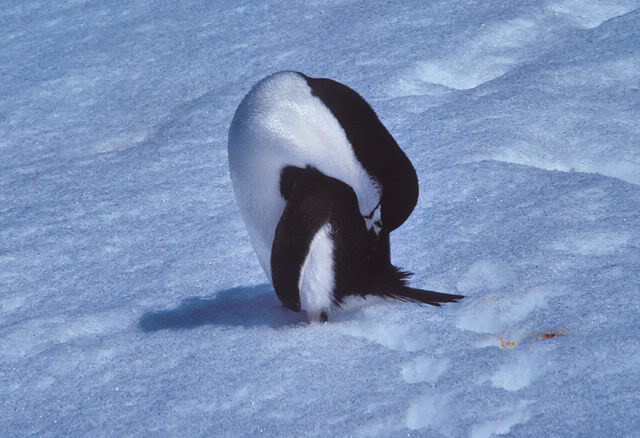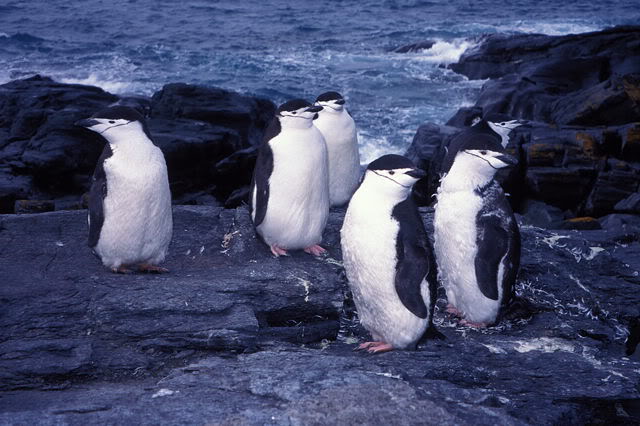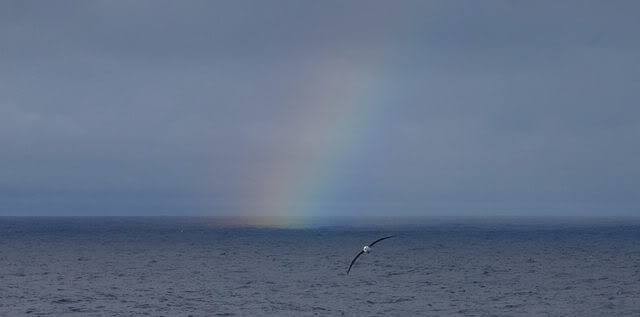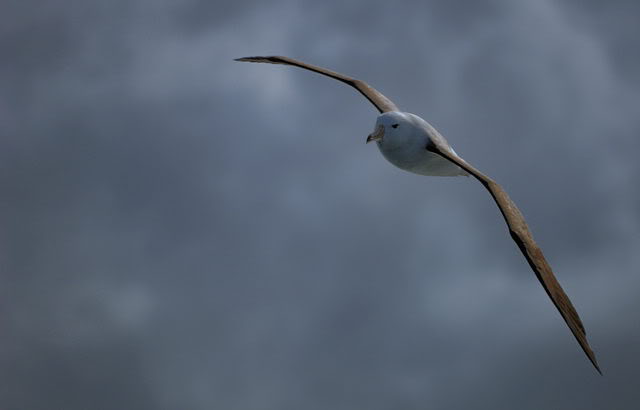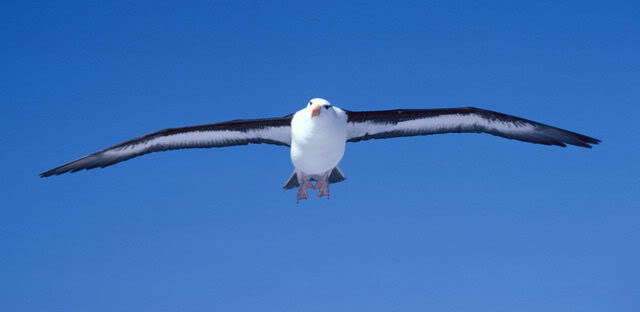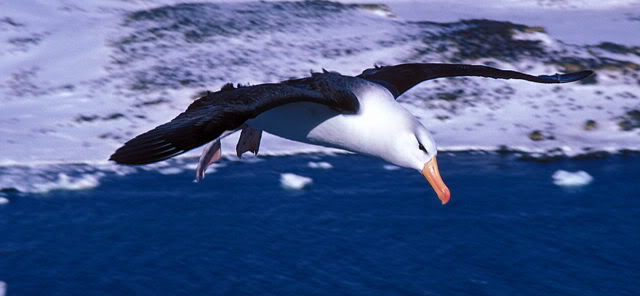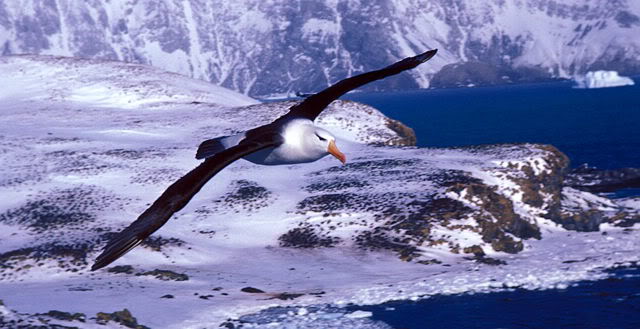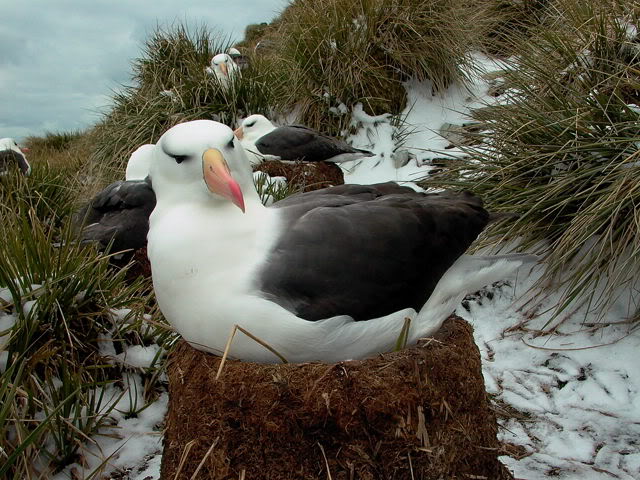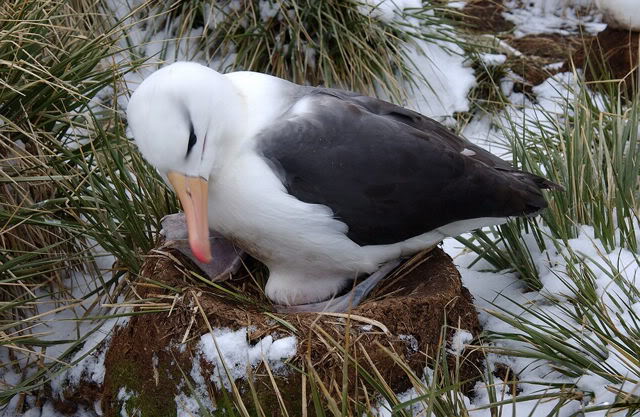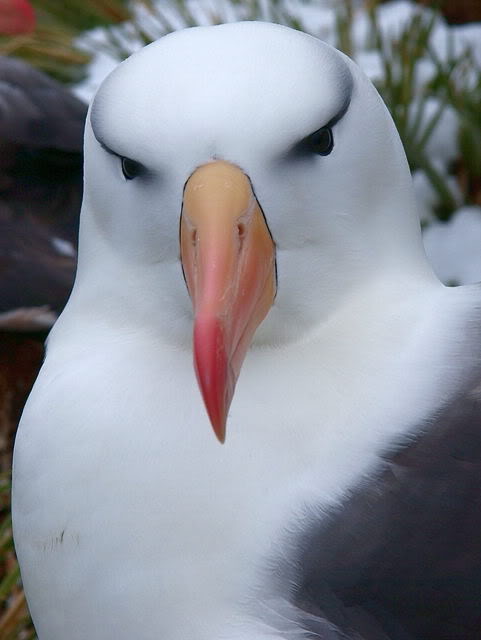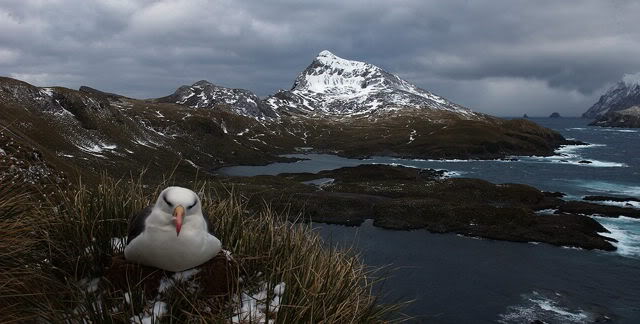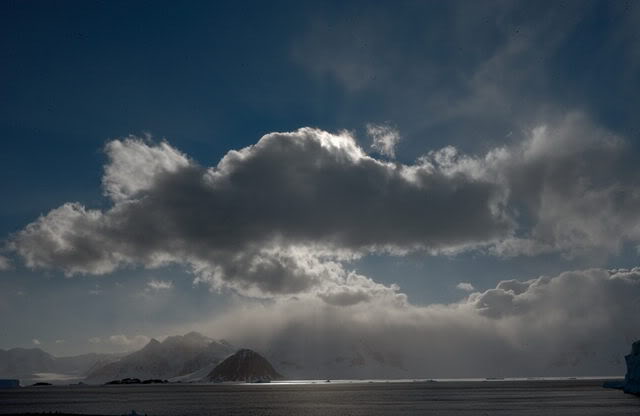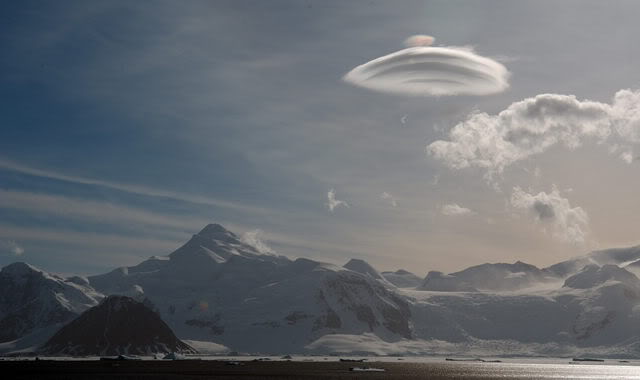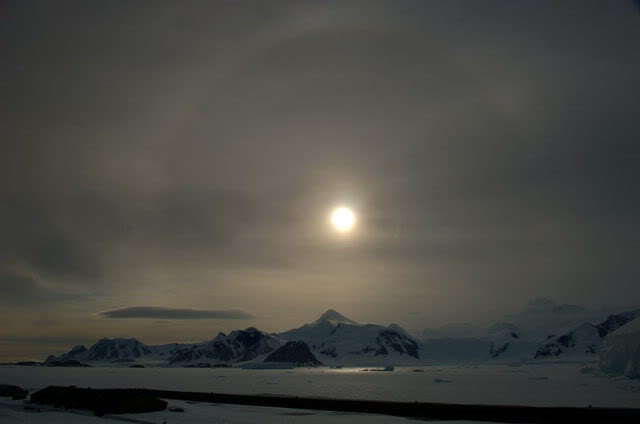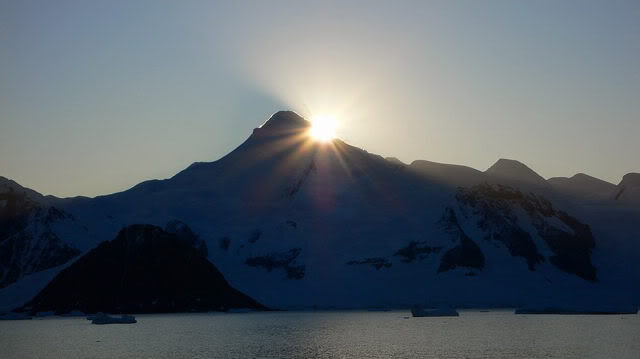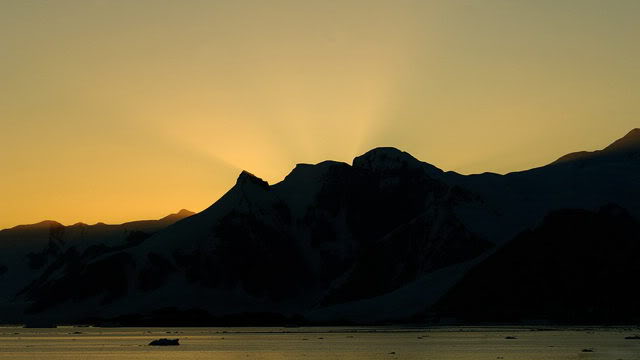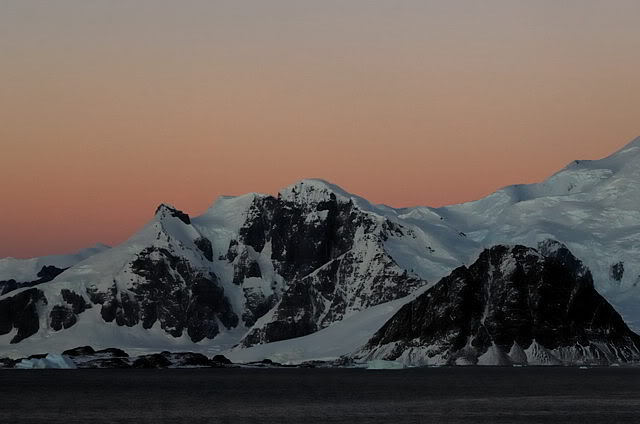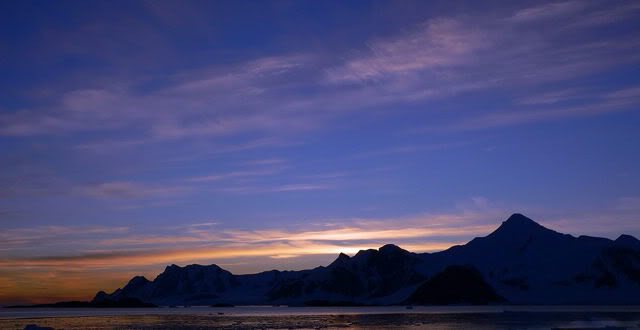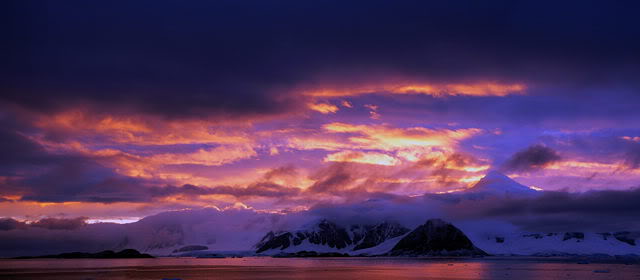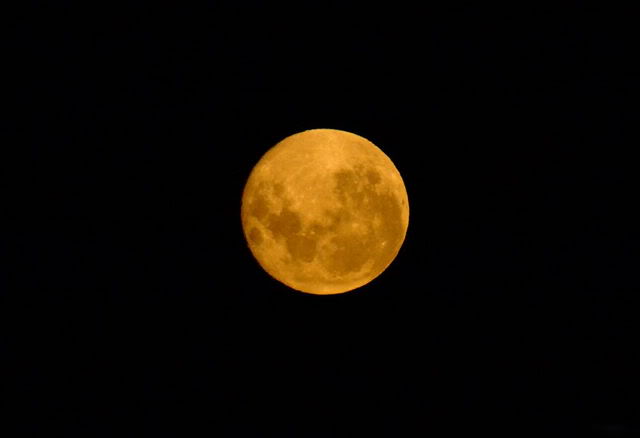The eerie, haunting call of a Light-mantled Sooty Albatross must surely be one of the most evocative sounds in the natural world. To sit on a mist-shrouded cliff top and hear the plaintive, long drawn out Pree-oowww echoing in the gullies below sends a shiver down ones spine.
On clearer days, you can sit and watch these birds in an aerial ballet in which a pair will fly together along the cliff tops, mirroring each others movements with a grace and precision which is simply breathtaking. This twinning display is one of the wonders of nature which for some reason is not as well known as other species' display.
The adults arrive back on their breeding grounds in mid-October. Previously paired birds await the arrival of their mates, whilst younger birds search out partners of their own by displaying.
Males generally arrive first and patrol the cliffs looking for suitable nesting ledges. Once selected, he lands and begins to attract a mate by Sky-calling. When the other partner returns, or a new one is found, both birds take to the wing and start their twinning display. Younger birds need a lot of practice and it is obvious to see which birds have been together before as their flights are perfectly synchronised, whilst the younger birds are almost clumsy in comparison. Sometimes a third or fourth bird will join in these flights.
Ledge displays are also performed, where pairs will sky-call, bill point and tail twist to each-other in a ritualistic manner.
The single egg is laid at the end of October or first week of November and both birds take turns with incubation, which lasts approximately 70 days. The egg hatches out during the last week of December or first week of January and is not left on it’s own until three weeks have elapsed. After this period, both the adults go out to sea in search of food and return approximately every two days to feed the chick. Their diet consists of Squid, Crustaceans, Fish and Carrion.
Fledging takes around 140 days after hatching and the juveniles will spend on average 7 years out to sea before returning to their natal areas to breed.
Light-mantled Sooty Albatross.
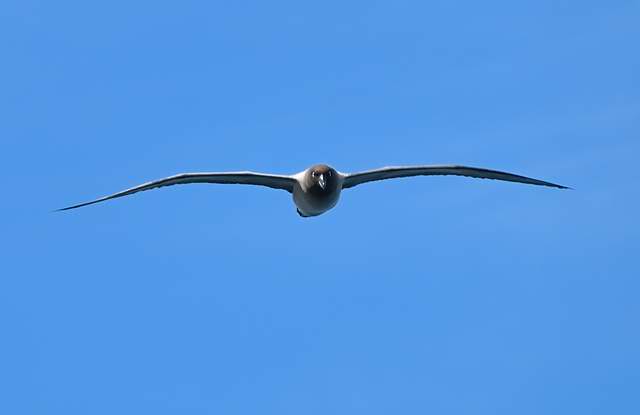
Bird arriving at the start of the breeding season.
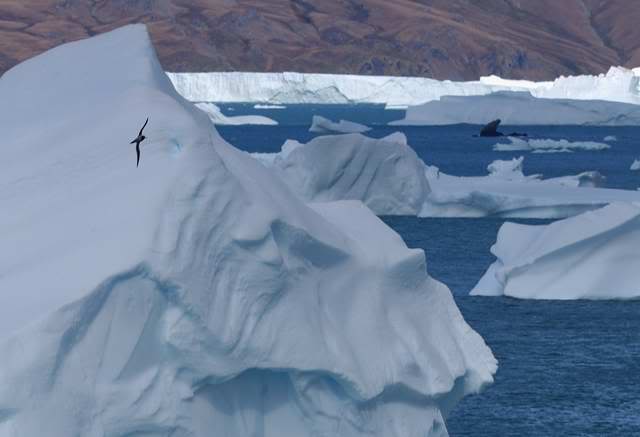
Males search the cliffs for a suitable nesting ledge.


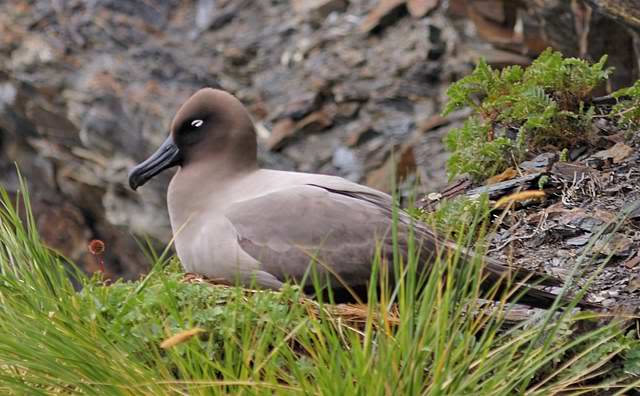
Once a ledge is selected, he will sky call to attract a mate.
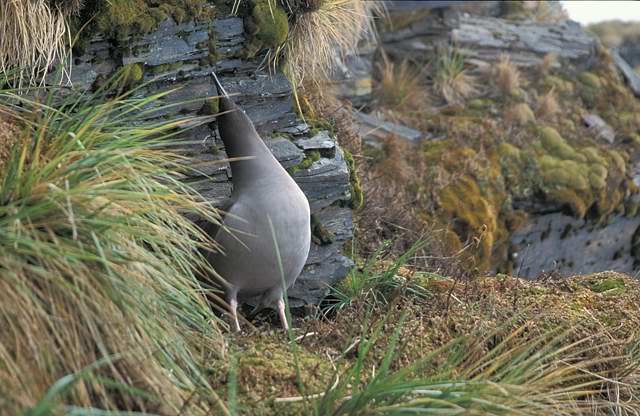
He will then begin a display flight on his own.
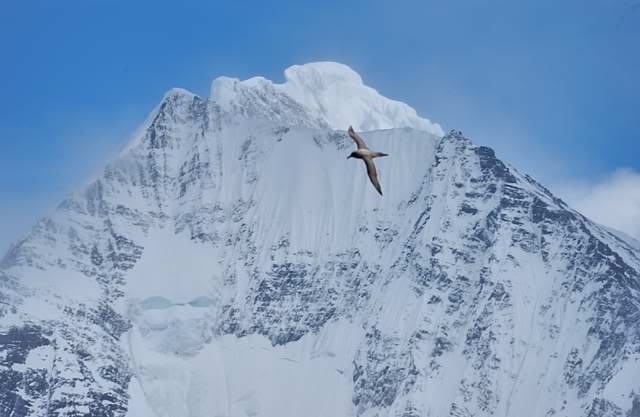
Once a mate is attracted, they perform the twinning display.

Younger, inexperienced birds practice together in small groups.

Ledge displays usually start with a head bow.
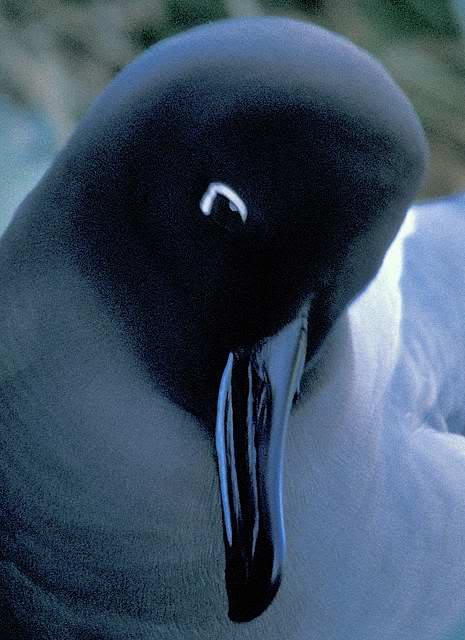
This will include bill thrusting.
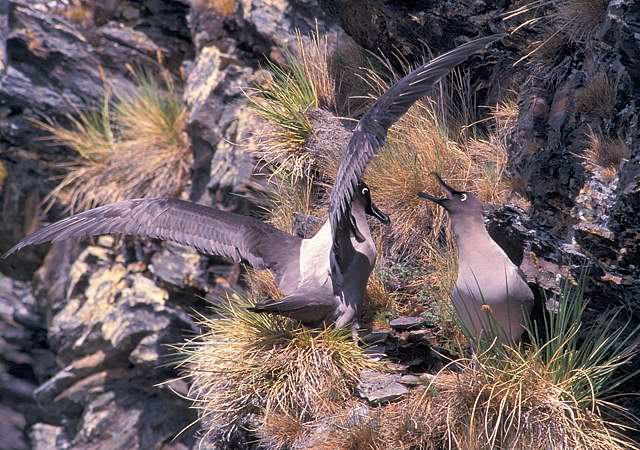
Both head bow and sky call displays.
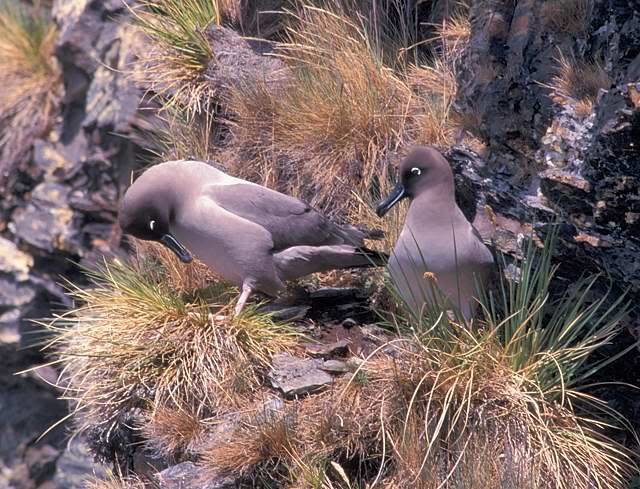
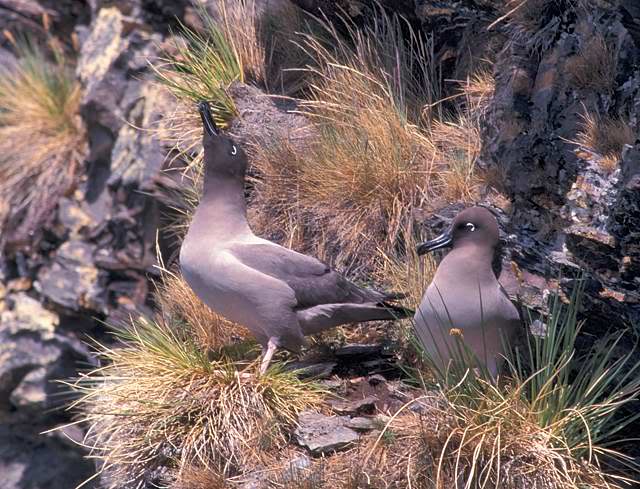
Nest building.
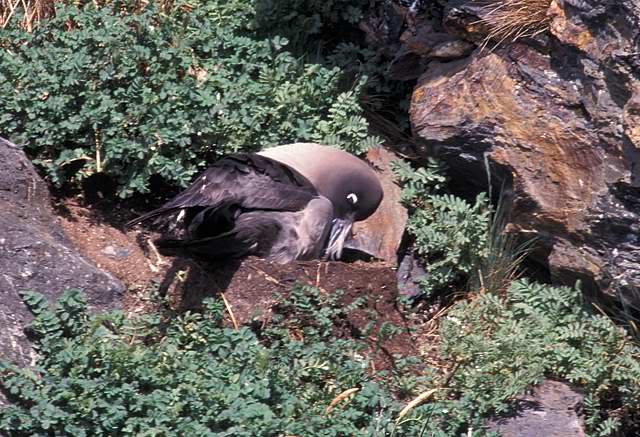
Recently laid egg.
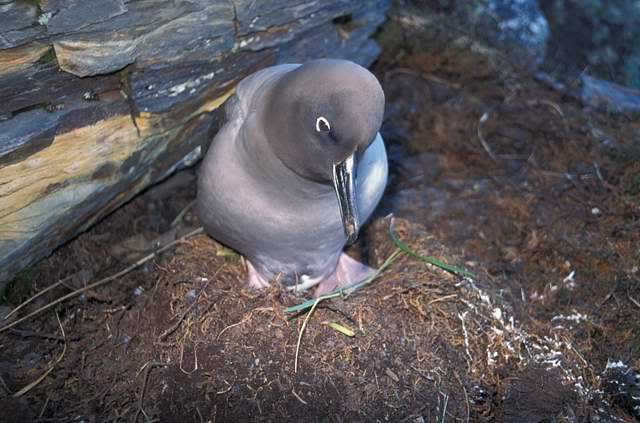
Incubation.
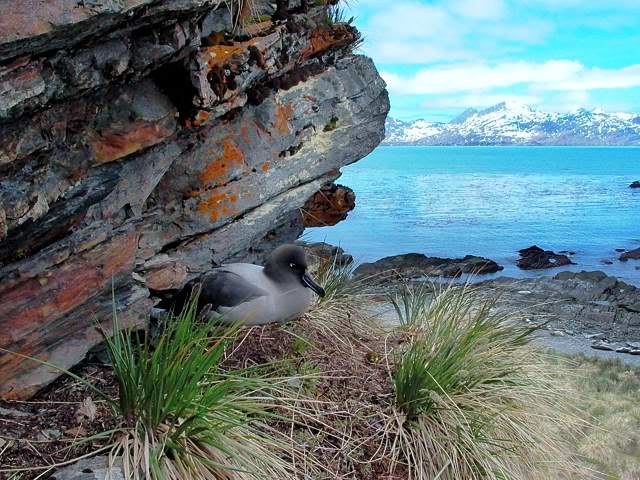
Recently hatched chick.
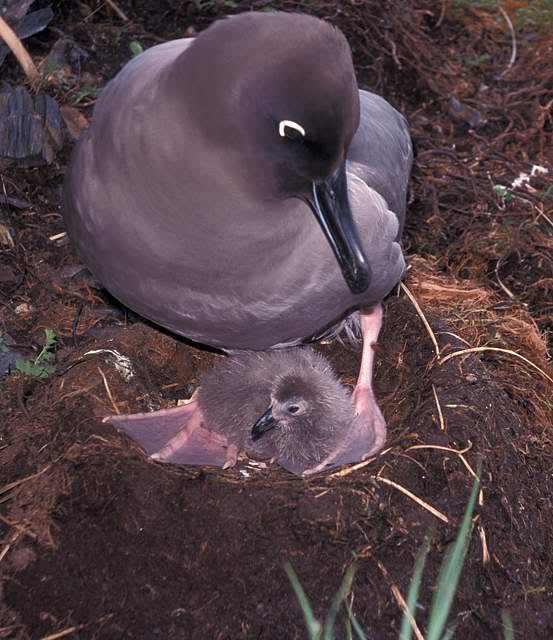
Older chick.

Loosing the white face.
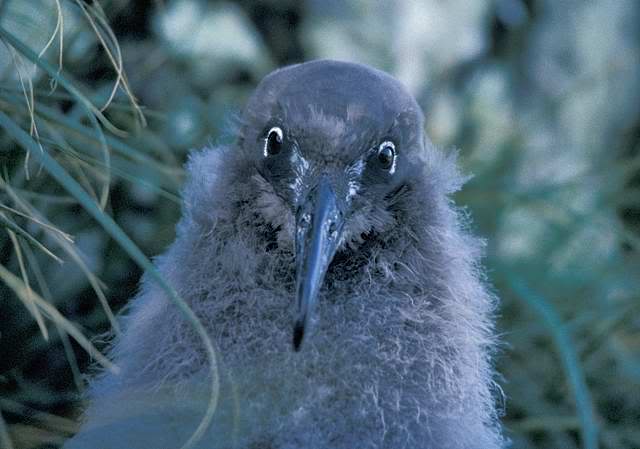
Close to fledging.

Once fledged, they roam the Southern Oceans for up to seven years.
